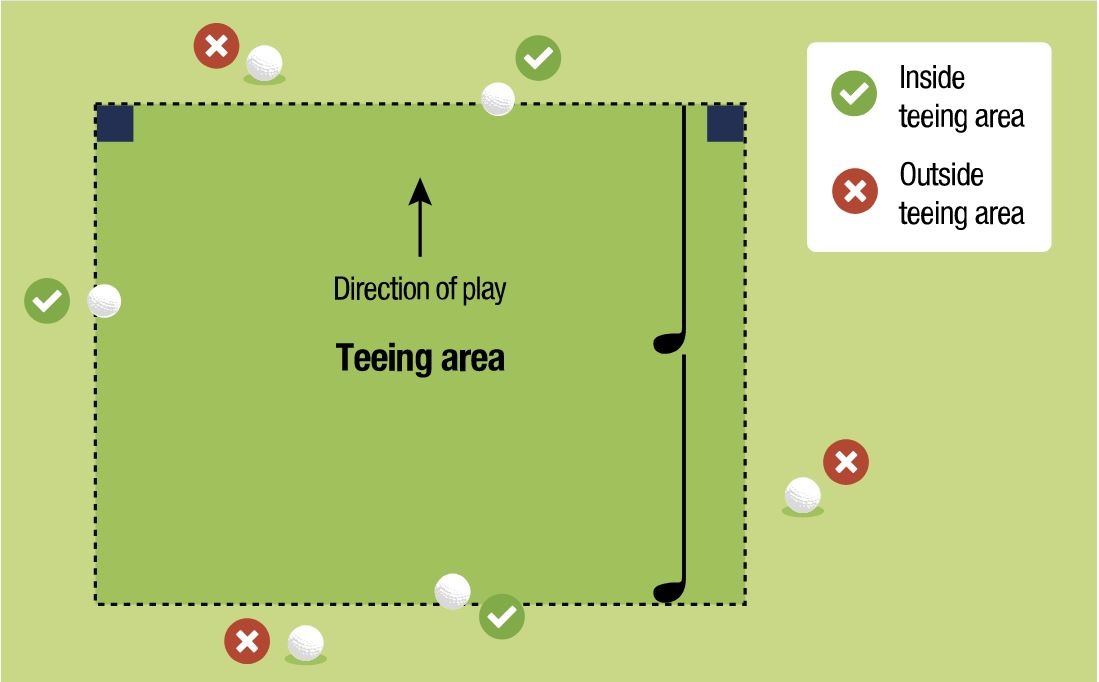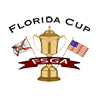Written by: Darin Green, Senior Director of Rules & Competitions
We all know that the teeing area is where we start the play of the hole, but do we know the size of the area and all of things the Rules of Golf allow us to do?
Size of the Teeing Area
In the article posted on October 1st titled Learning the Rules I stressed how important it is to know the definitions in the Rules of Golf. The definition of Teeing Area tells us many things:
- It is the area where the player must play from when starting a hole
- It is a rectangle that is two club-lengths deep, measured from the front and outside edge of the markers (measured with your longest club except a putter)
- It is one of the five defined areas of the course
Additionally, the tee markers defining your teeing area are fixed and cannot be moved (all other tee markers are movable obstructions).
To "play from the teeing area" means that any part of the ball must be within the teeing area. So, it is permissible to stand outside the teeing area and play your ball that is within the teeing area.
"No Holds Barred" in the Teeing Area
The Rules allow nearly everything in the teeing area. You may do the following:
- Use a tee to tee the ball up
- Use damp sand to tee the ball up
- Create a tuft of grass by any means to elevate the ball
- Alter the surface of the ground
- Move, bend or break any natural objects that are attached or growing in the ground in the teeing area (break off a weed or long grass)
- Remove dew and water
- Anytime your ball is within your teeing area you may move the ball and tee it up. For instance, your tee shot hits a tree and deflects backwards and comes to rest within your teeing area; you may lift the ball and tee it up again anywhere within your teeing area without penalty.
- If you accidentally knock your ball off the tee or move it, there is no penalty and you may retee the ball
The few restrictions within the teeing area:
- The tee markers are fixed and must not be moved for a stroke. It is ok to lift and move them once your ball is outside the teeing area.
- If a tee is used, it must be a conforming tee
- The player must not improve their conditions affecting the stroke (area of intended swing, stance, or line of play) by modifying something natural that is outside of the teeing area. For instance, a player wants to tee their ball near the edge of the teeing area and stand outside the teeing area to play the shot, but a tree branch is nearby and interferes with the player's swing. The player must not break or move the branch to improve his area of swing.
Playing From Outside the Teeing Area
If you play golf long enough you will likely experience playing from outside the teeing area. This usually happens when a player mistakenly stops at the wrong tee markers. Additionally, sometimes a player accidentally tees their ball just in front of the tee markers. In both of these situations the player plays from outside the teeing area.
Stroke Play - Playing from outside the teeing area is one of the times the error must be corrected. If you play from outside your teeing area you earn a two-stroke penalty and you must correct the error by playing a ball from within the correct teeing area. Any strokes made at the ball the was played from outside the teeing area do not count. If the error is not corrected and the you tee off on the next hole, you are disqualified.
Match Play - If you play from outside the teeing area in match play, your opponent has the opportunity to make you cancel the stroke and replay from the correct teeing area without penalty. If the opponent does not make you cancel and replay, then the ball that was played from outside the teeing area is in play without any penalties.
See you on the course!






